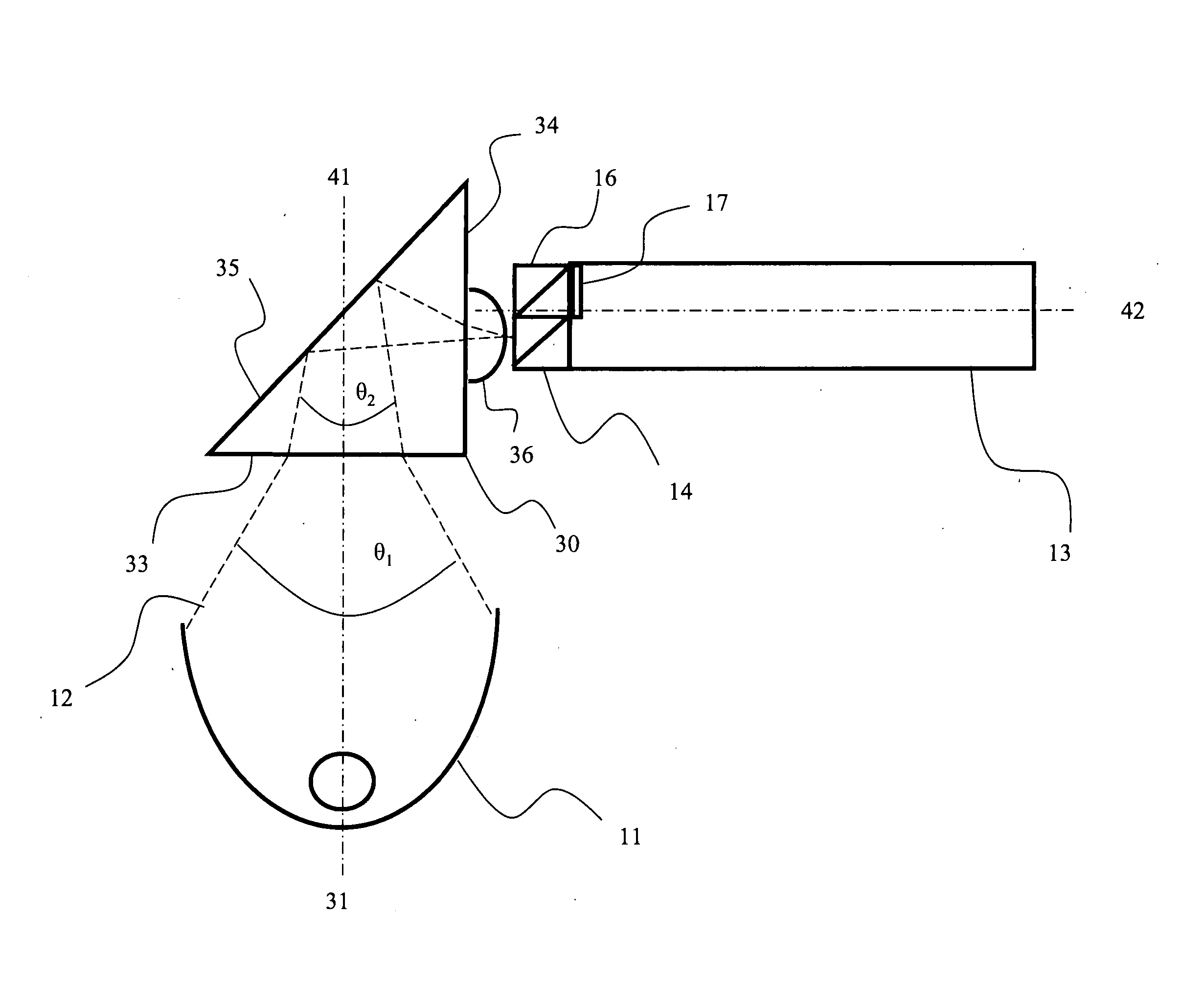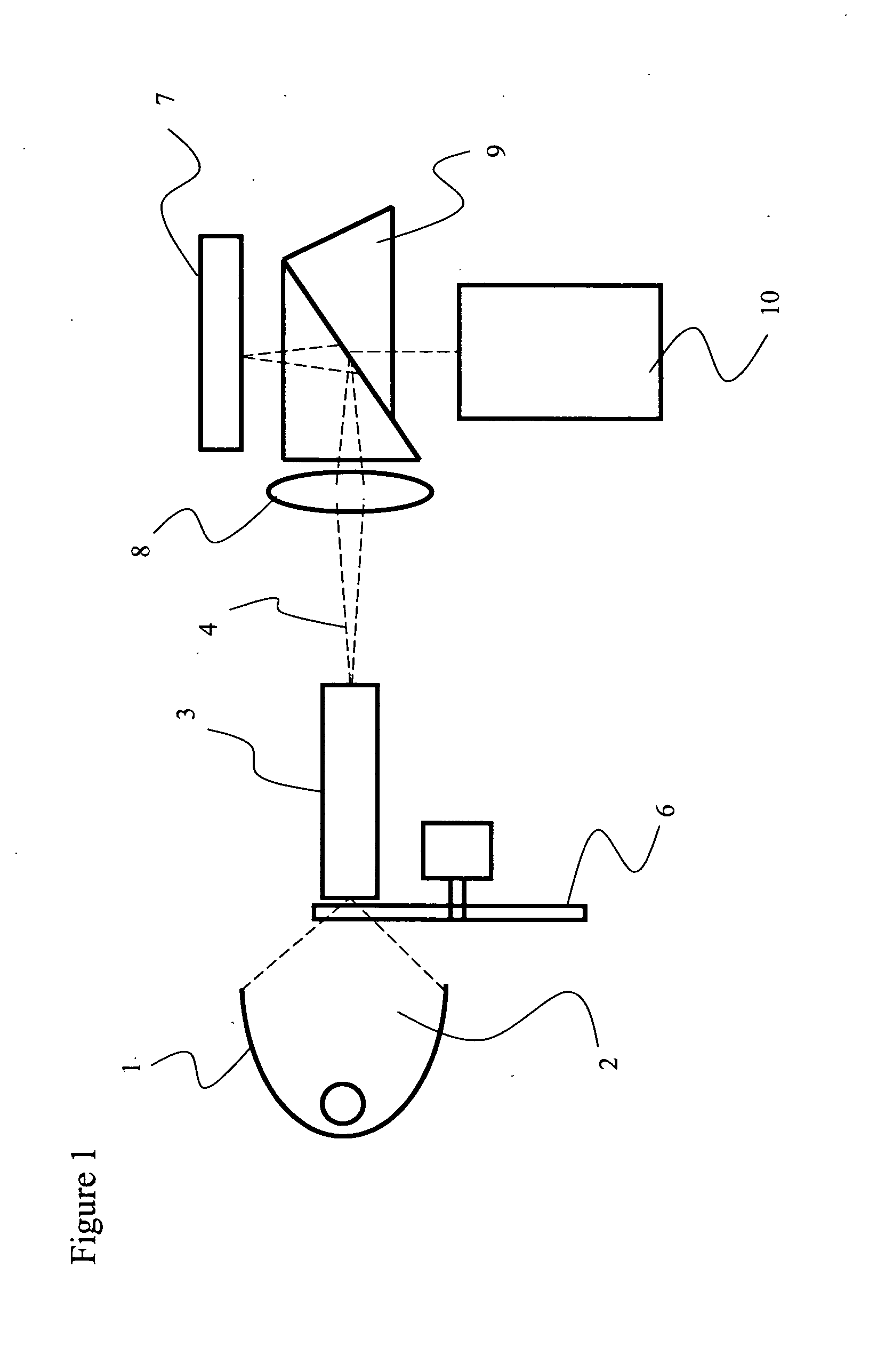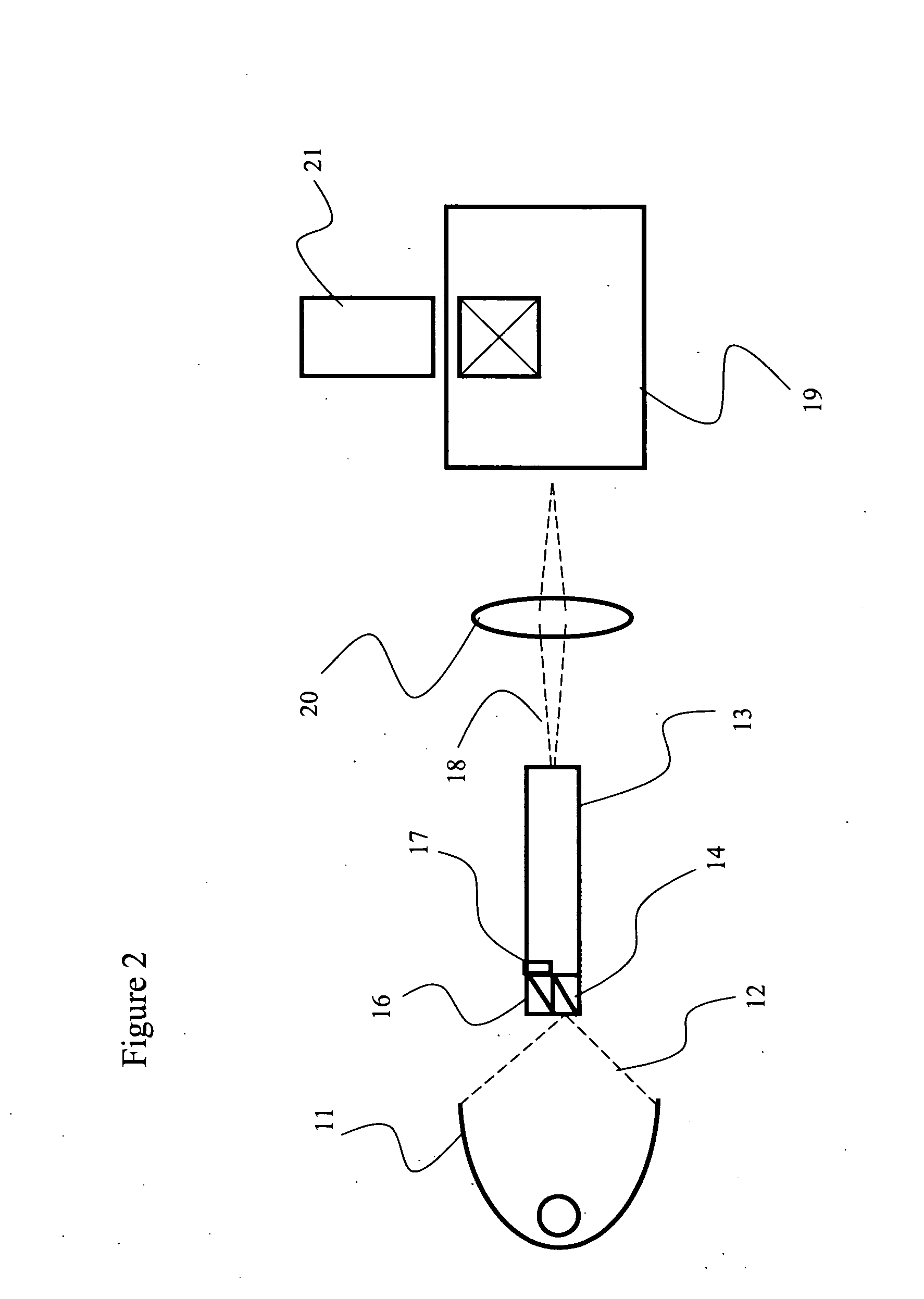Folding converging light into a lightpipe
a technology of converging light and lightpipe, which is applied in the direction of instruments, lighting support devices, polarising elements, etc., can solve the problems of increasing costs, reducing and reducing the efficiency of light sources, so as to achieve the effect of increasing the focal ratio of light sources
- Summary
- Abstract
- Description
- Claims
- Application Information
AI Technical Summary
Benefits of technology
Problems solved by technology
Method used
Image
Examples
second embodiment
[0027]FIG. 4 illustrates the present invention in which total internal reflection is used to reflect the beam of light 2 off of the third face 35 instead of a coating. A tapered lightpipe 38 replaces the original lightpipe 3 to ensure that the TIR condition is not defeated. Accordingly, the use of the prism 30 with an index of refraction greater than air ensures that the beam of light 2 is reflected providing the extra distance required between the light source 1 and the lightpipe 3 to do so, and without the use of flat mirrors or coatings.
third embodiment
[0028]FIG. 5 illustrates the present invention comprising a polarization-dependent front end unit for use in a polarization dependent light engine system, such as the one illustrated in FIG. 2. As in FIG. 2, the light source 11, with optical axis 41, produces a high-flux, rapidly-converging beam of light 12 for input the lightpipe 13, which is defined by longitudinal axis 42. The first polarization beam splitter 14 passes the light of a first polarization, e.g. p-polarization, while reflecting light of a second polarization, e.g. s-polarization. The second beam splitter 16 reflects the s-polarized light again through the polarization rotator 17 in the direction of the lightpipe 3. In this arrangement, the prism 30 (as in FIG. 3) is used to reflect the light from the lights source 11 to the first polarization beam splitter 14.
fourth embodiment
[0029] the present invention, illustrated in FIG. 6, provides a polarization-dependent front end unit in which the light source 11 produces a high-flux, rapidly-converging, beam of light 12 for input the lightpipe 13. Instead of positioning the prism 30 between the light source 11 and the first polarization beam splitter 14, a first polarization beam splitter 45 is positioned in the path of the beam of light 12 for reflecting the light of a first polarization, e.g. s-polarization, while passing the light of the orthogonal polarization, e.g. p-polarization, to a prism 46. The light of the second polarization is reflected off of the air / prism interface 47 by total internal reflection through a polarization rotator 48 into the lightpipe 13. In this arrangement, the second PBS 16 can be eliminated, and replaced by the prism 46. The air / prism interface 47 may or may not have a polarization-dependent coating to enhance reflection.
PUM
 Login to View More
Login to View More Abstract
Description
Claims
Application Information
 Login to View More
Login to View More - R&D
- Intellectual Property
- Life Sciences
- Materials
- Tech Scout
- Unparalleled Data Quality
- Higher Quality Content
- 60% Fewer Hallucinations
Browse by: Latest US Patents, China's latest patents, Technical Efficacy Thesaurus, Application Domain, Technology Topic, Popular Technical Reports.
© 2025 PatSnap. All rights reserved.Legal|Privacy policy|Modern Slavery Act Transparency Statement|Sitemap|About US| Contact US: help@patsnap.com



